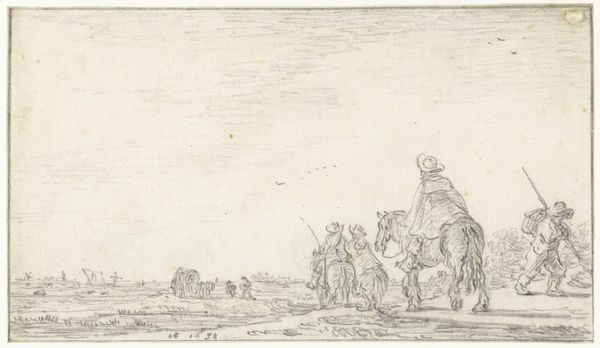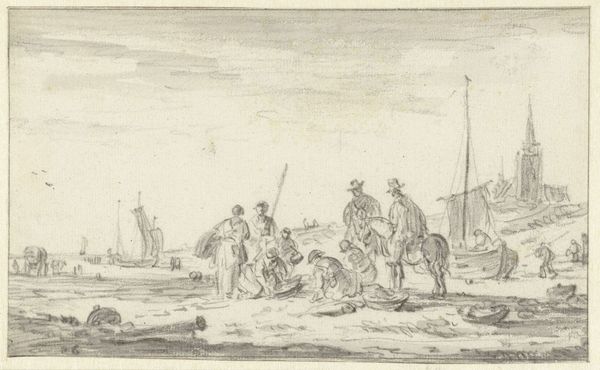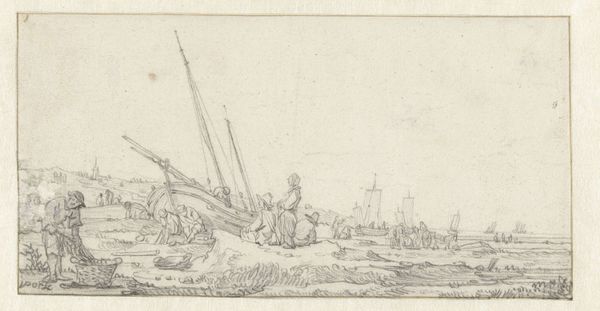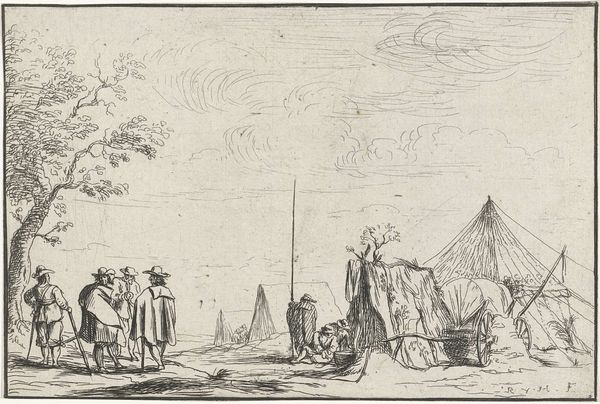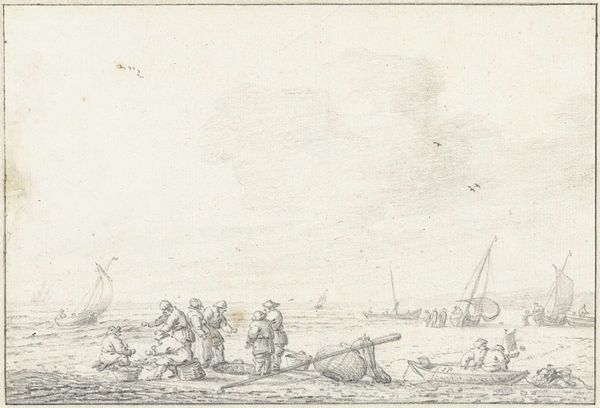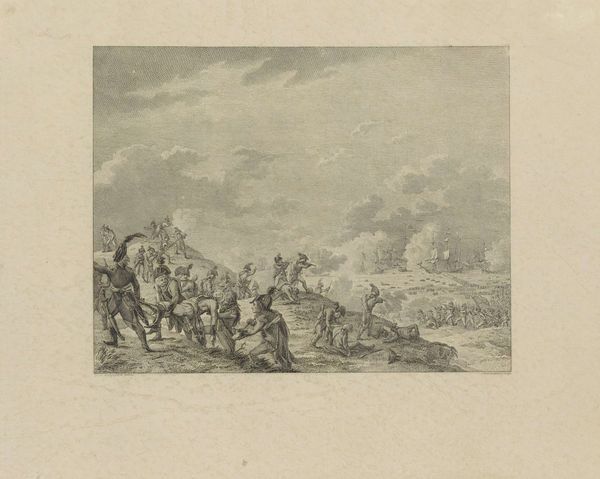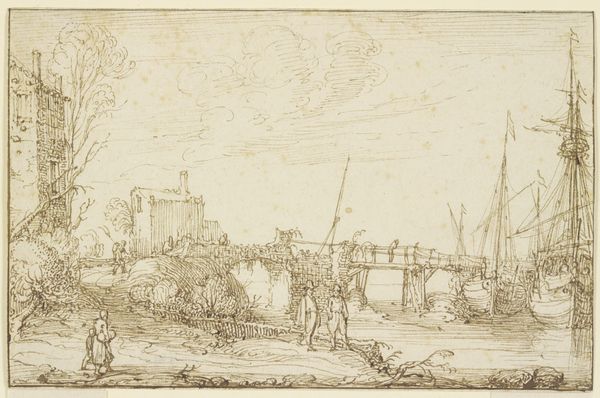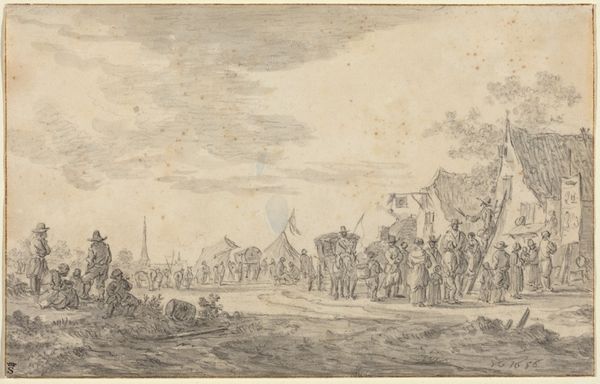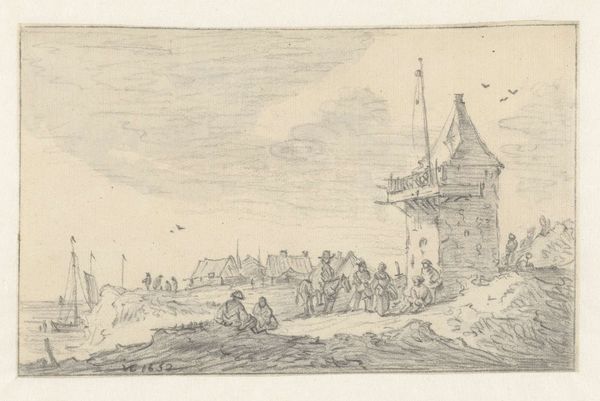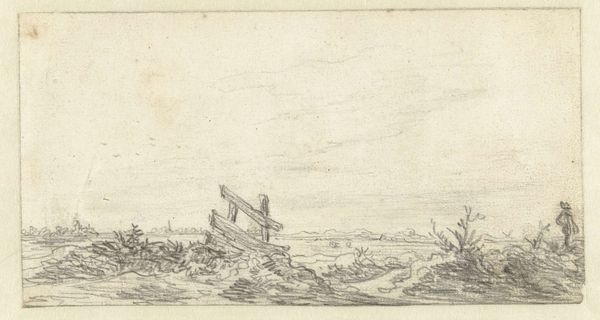
drawing, pencil
#
drawing
#
dutch-golden-age
#
pen sketch
#
landscape
#
pencil
#
genre-painting
Dimensions: height 125 mm, width 200 mm
Copyright: Rijks Museum: Open Domain
Curator: This drawing, "Landschap met boerenkar," or "Landscape with a Farmer's Cart," from the late 17th century, comes to us anonymously from the Dutch Golden Age. It’s a pencil and pen sketch now residing here at the Rijksmuseum. Editor: There’s a lovely simplicity to it. Almost dreamlike, a quiet pastoral scene, dominated by the vastness of the land. Curator: The anonymity itself speaks to a broader historical trend, doesn't it? Dutch Golden Age art often reflected the rising merchant class and their interest in everyday life. Landscapes like these became incredibly popular, moving art away from solely religious or aristocratic subjects. Editor: Absolutely. And note the figures. They’re not idealized heroes, but ordinary folk. This reflects a societal shift towards valuing labor and the common person. The windmill too, is emblematic of Dutch ingenuity and hard work. The scale feels intentionally democratic, every figure receiving equal consideration. Curator: Precisely. The inclusion of a farmer’s cart in the landscape ties into the period's economic expansion. These weren't just pretty pictures; they mirrored the societal emphasis on trade and agriculture which underpinned Dutch power at that time. The composition suggests a narrative, don’t you think? Movement, but also rest. Editor: There’s something compelling about that duality—the cart suggests progress and movement, yet the seated figures signal leisure and a slower pace of life. Is this artwork inadvertently commenting on labor, race, and class? What roles are represented in this piece and why are the individual's racial characteristics absent? Who benefits from what's included and what has been removed and the sociohistorical forces around its making? Curator: A nuanced interpretation, given that landscape's increasing symbolic weight highlighted growing tensions related to the unequal distribution of wealth in the young Republic and, soon thereafter, in their global colonies. But it's impossible to determine such meanings without more knowledge of the creator and context, unfortunately lost to time. Editor: Perhaps that lost history compels us to more fiercely question and explore its implicit political and social constructs. I appreciate how accessible this seemingly straightforward work makes thinking through those complexities. Curator: It certainly makes one contemplate the complex intersection of daily life and societal forces, a constant negotiation visible even in art of the past. Editor: A vital consideration indeed.
Comments
No comments
Be the first to comment and join the conversation on the ultimate creative platform.
